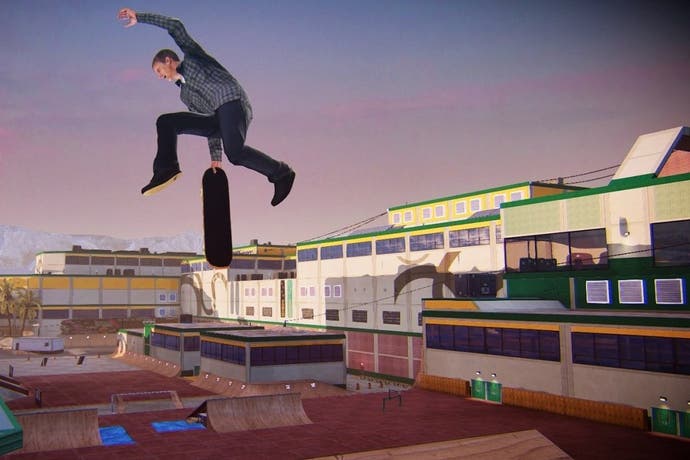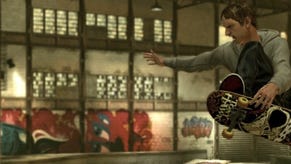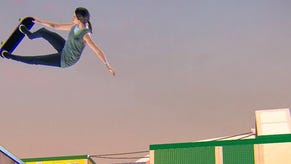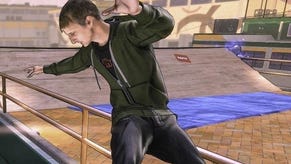Tony Hawks Pro Skater 5 review
Half-piped.
In 2014, four years after its original release, Skate 3, the third and most chaotic entry in EA's series of skateboarding video games, was reprinted. The game had become an unexpected hit on YouTube. A bevy of bugs and glitches made it the ideal text for let's players and streamers, those presenters who typically seek games that elicit reactions of laughter or fear on camera, those extremes of emotion that most appeal to audiences in this newly minted medium. One early compilation of ragdoll pratfalls and gravity-shanking stunts led the charge. It now has close to 5 million views. Sales rose, skaters collapsed and EA found itself an improbable pioneer as the publisher of a game whose success was founded upon failure.
Activision may be hoping that Tony Hawks 5 repeats its old rival's trick. This, the fifth game in a series that debuted in 1999, is broken in similar kinds of ways. Bail from a grind and your skater might, on hitting the ground, disappear up to his neck in solid concrete. Strike a half-pipe at the wrong angle and your character's body may cartwheel through the air in majestic slow motion, before the game jump-cuts jarringly back to the action. It's as if the shot was directed by a mildly distracted editor who notices an awful accident occurring on-screen slightly too late to pan away, but just in time to save the audience from the distress of seeing someone break their neck.
Some glitches prove helpful. Find a short rail positioned between two walls and, if you keep the grind button held down, your skater may ping-pong automatically between the obstacles, racking up a stratospheric combo with each flopping rebound. While the sight of an aging Tony Hawk phasing stoically through various pieces of masonry is often humorous, not every glitch is suitable for the You've Been Framed treatment. Activision and developer Robomodo's logos, the first things you see in the game, frequently stammer on load. Has there ever been an earlier foreshadowing in a broken game of what is to come?
The concept is, nevertheless, sound. Tony Hawks Pro Skater 5 was intended to return to the series' roots, those early and beloved PlayStation games that were defined by long, improbable combos stretching luxuriously across the scenery. This was, surely, a practical choice as much as a nostalgic one; in 2012 Robomodo developed Tony Hawk's Pro Skater HD, a compilation of the series' early levels, rebuilt in the Unreal Engine. Tony Hawks 5 was seemingly built on the code and lessons learned when developing that modestly priced downloadable excursion. And, to a certain extent, the rhythm and feel of the earliest games in the series has been recreated. Some of the game's eight stages return to classic locations such as the School and Warehouse and you immediately view the scenery through the famished eyes of the high-score chaser, figuring out lines where it's possible to, for example, turn a grind into a kick-flip across a gap, then land into a manual and, finally, drop down into a half-pipe.
This familiar and appealing core is soon overwhelmed, not only by the game's technical issues, but also by structural problems and a ruinous interface. Each stage, which you enter alongside a clutch of online strangers (or friends, if you set up a private room), who skate alongside you, contains a number of loose objectives. You might need to collect the five letters that make up the word 'combo', or find the hovering video tape, or smash the boxes and so on. These are supplemented by 15 more formal missions, represented by a clutter of Google Map location icons, which hover around the scene. Skate up to one and select it and you'll be transposed to a new version of the same stage (this time emptied of other skaters) where you are free to tackle the mission alone.
These missions display both variety and creative flair and provide a modest testament to the imagination of the game's designers. In one you have to collect ice creams and, according to the mission text, deliver them back to an ice-cream van (although, in Tony Hawk 5's asset-impoverished land, the ice-cream van is metaphorical; you merely have to return to a particular half-pipe). In another your skater's head continually swells, reducing in size only when you successfully land tricks. How long can you survive until it explodes? Each mission is scored, with up to three stars awarded depending on how well you perform. 15 stars unlocks the next stage in sequence.
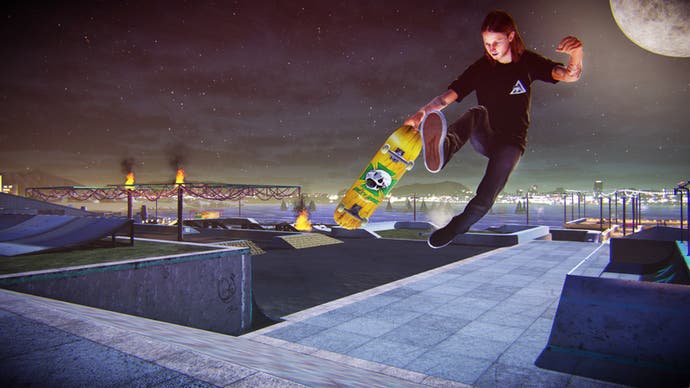
Nevertheless, signs that this is a game that has been rushed to an impossible deadline exist everywhere. There's an intrusive pause before the beginning of each mission, a few seconds while you wait for something or other in the machine to spring to life. High definition textures often load in around you, replacing the fuzzy filler wallpapering. Sometimes they don't load at all. Inexplicably, missions can also be selected at any time from a drop-down menu screen. Why then litter the environments with mission markers as well? The hedging of options speaks of a design that was months away from settling. It's too sketchy, too unrefined. This is a game released before it was cooked.
Its multiplayer modes provide the most damning evidence to support this conclusion. These diversions, which include Deathmatch and King of the Hill contests (you fire directed projectiles from your deck whenever you ollie), are buried away in a menu that players might reasonably never notice. Select one and the game searches online for others to join. If no other players are available, no matter: it forges ahead regardless, depositing you into the match solo. There is no way to exit the forsaken pitch early without quitting the entire game. There's more: on some menus the analogue stick works, on others inputs don't register at all (you must switch to the d-pad). The slim selection of licensed music tracks frequently cuts out. Menu transitions are dreadfully slow. Navigation of those menus is a labyrinthine puzzle.
Why, when Activision has seemingly taken so much care and attention with its elegant revival of Guitar Hero? Why, when Activision has supported Bungie's triumphant overhaul of Destiny? This is a publisher that cares deeply about its marquee titles - after all, its bets are placed on perilously few of them. Seemingly, it comes down to a simple contractual obligation. The Tony Hawks license runs out at the end of the year. The game had to be ready for its deadline, even if wasn't ready for its deadline. It's an explanation that goes some way to absolve the development team, who no doubt gave their all and worked as hard as they could within the time that was available. Regardless, to charge full price for a game that is so clearly ramshackle is scandalous. Not even the glitches can save Tony Hawks 5. They are too narrow in range to sustain our interest. A skater disappearing in dry concrete is funny the first time. But the joke wears pretty thin when it's repeated this often, especially when it comes at such a high price for everyone involved.
